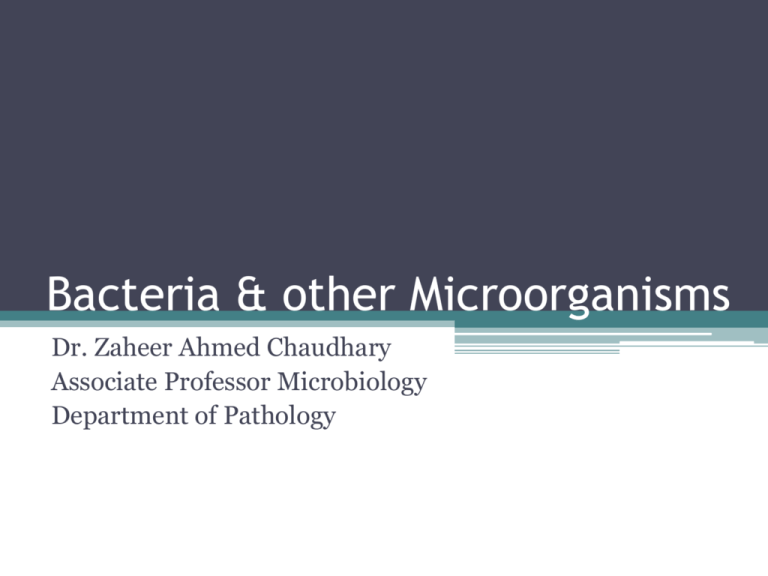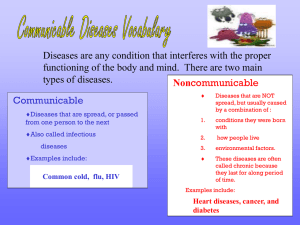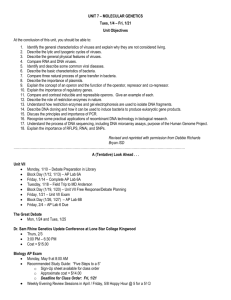Bacteria & other Microorganisms
advertisement

Bacteria & other Microorganisms Dr. Zaheer Ahmed Chaudhary Associate Professor Microbiology Department of Pathology Causative agents & their Classification • • • • • Bacteria Fungi Protozoa Helminths Viruses – – – – – Prokaryotic kingdom Protists kingdom(uni-multi) Protists kingdom Animal kingdom Replicates only with in cells • Helminth and protozoa are called parasites. Features of microorganisms • Bacteria, fungi, helminths and protozoa are cellular where as viruses are not. • Distinction is based on structure, chemical composition, bio-synthetic and genetic organization. 1) Structure: Cell has nucleus with DNA surrounded by cytoplasm within which proteins are synthesized for energy. • Viruses have inner core of genetic material DNA or RNA but no cytoplasm. • They are dependent on host cells for energy and protein synthesis. 2) Replication: • Prokaryotics i.e. bacteria replicate by binary fission, and eukaryotics divide by mitosis. Binary Fission in Bacteria • Viruses disassemble, produce many copies of their nucleic acid, proteins and then reassemble into multiple progeny viruses within the host cell. 3) Nucleic acid: • Cells contain both DNA and RNA while viruses contain either of the two. Types of Cells • Prokaryotic- bacteria • Eukaryotics- Helminths, fungi and protozoa. • Eukaryotics have true nucleus with multiple chromosomes and surrounded by cell membrane, divide by mitosis. • Prokaryotics have nucleoid consisting of single circular molecule of DNA without nuclear membrane and mitotic apparatus. • Eukaryotics contain organelles e.g. mitochondria, lysosomes, and large ribosome (80S). • Prokaryotics contain no organelles and smaller ribosomes(70S). Comprised of 30 and 50 sub units. • Eukaryotics do not have peptidoglycan in their cell wall and bounded by a flexible cell membrane or in case of fungi a rigid cell wall with chitin (homopolymer of N.acetylglucosamin). • Prokaryotics have a rigid external cell wall containing of peptidoglycan i.e. the polymer of amino acid plus sugar. • Eukaryotics cell membrane contains sterols. • Prokaryotics do not have cell membrane except wall less Mycoplasma which contains sterols. • Prokaryotics are haploid with single chromosome. • Eukaryotics have diploid chromosomes. • Most protozoa and some bacteria are motile while fungi and viruses are non-motile. • Protozoa possess three different organs for locomotion i.e. flagella, cillia and pseudopodia • Motile bacteria only move by flagella. Flagella Comparison of Medically Important Organisms Characteristics of Pro & Eu-karyotic Cells Viruses • Are not cells and not visible with light microscope. • Are obligate intracellular parasite. • Contain no organelles and biosynthetic machinery. • Contain only DNA or RNA. • Are called bacteriophage if the host is a bacteria.






